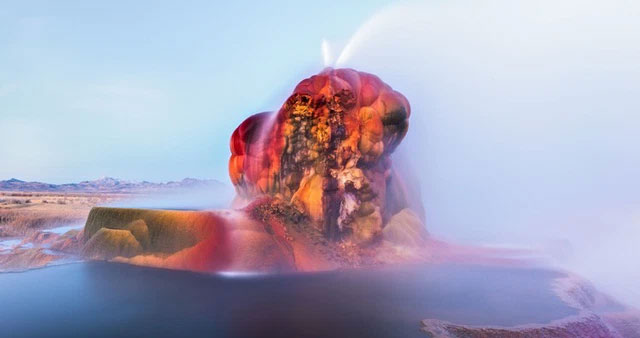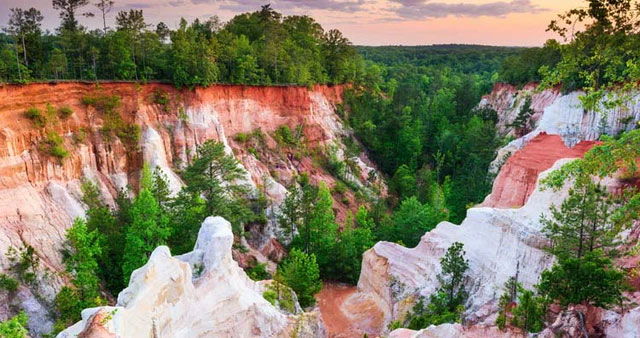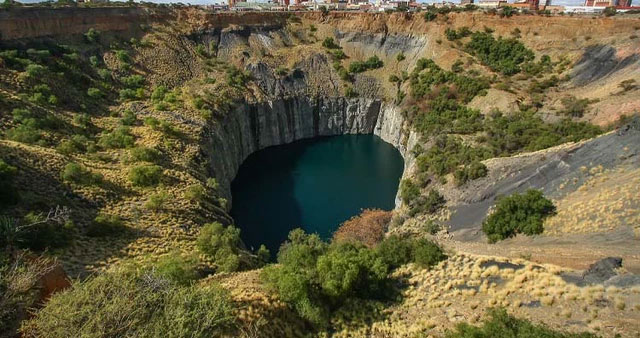The world is full of diverse wonders, and many of the marvels on our planet appear to be products of nature. However, upon closer examination, we discover that they were actually created by humans.
Top 5 Stunning Man-Made Wonders in the World
1. Glass Beach, California
Located in Mackerricher State Park in Fort Bragg, Glass Beach in California was once a city dump. For about 60 years, from the 1900s to the 1960s, residents disposed of trash, including glass bottles, cans, and other debris, down the cliffs and into the ocean below.

This coastline has now become a famous tourist destination in Northern California.
However, the dump was closed in 1967, and several cleanup programs were initiated to remove waste. Biodegradable waste was left on the beach, while metals and other materials were removed and sold as scrap. Nevertheless, during its time as a dump, the ocean waves battered the glass and ceramics, turning them into smooth, glass-like pebbles.
After years of restoration and cleanup, the beach has taken on a remarkably new shape. Today, it has become a popular tourist spot in Northern California, and you can even visit the “Sea Glass” museum here.
Today, it is illegal to take any glass pieces from the beach, but this has not stopped tourists from taking home small amounts of glass. As a result, the amount of glass available continues to dwindle.
2. Fly Geyser, Nevada

This is a wonder created by accident.
Fly Geyser in Nevada is not a natural wonder; rather, it is an accidentally created marvel. This artificial geyser appeared in 1916 on land owned by the “Burning Man Project.” Locals attempted to drill a well, hoping the desert would turn into fertile grassland, but instead, they struck a geyser.
However, this geyser was quickly abandoned when locals found the water to be too hot. Then, in 1964, the geyser re-emerged after a geothermal company drilled a test well at the same site.
After discovering the water was still hot, they decided to abandon the project, but the process of returning it to its original state was mishandled. Soon after, the geothermal heat caused the geyser to erupt to a height of 1.5 meters, carrying calcium carbonate deposits with it.
Over time, the calcium carbonate deposits expelled from the geyser have formed the uniquely shaped mound we see today. Scientists state that the colors on the mound are a result of a thermophilic algae that thrive in hot, moist environments, along with cyanobacteria (green and blue-green bacteria).
3. Providence Canyon

This canyon is the result of outdated farming practices in the early 1800s.
Little Grand Canyon or Providence Canyon located in Atlanta, Georgia, is an accidentally created man-made wonder. Although it is listed among the seven natural wonders of the state, in reality, this canyon is a result of outdated farming practices in the early 1800s.
In the past, farmers cleared the land by cutting down native trees, leading to soil erosion and surface loss. This land became degraded due to the alternating patterns of planted forests and agroforestry, resulting in sinkholes. By 1850, the ditches here were only under 2 meters deep, but over time, they have deepened to nearly 50 meters.
Although this canyon is essentially made up of eroded, nutrient-poor soil, the area has now become a hotspot for tourists. Visitors come here to camp and hike along the trails that wind around the rim and the canyon. Geologists also frequently visit the site to study the sediments and exposed formations.
4. Sidoarjo Mud Volcano, Indonesia

This volcano was created in a hazardous location in Sidoarjo.
The Sidoarjo Mud Volcano in Java, Indonesia, is not a typical mud volcano that erupts due to seismic activity; rather, it is a result of human greed. This volcano was created in a hazardous location in Sidoarjo by Lapindo Brantas Company.
They were warned multiple times to cease drilling and natural gas extraction activities here, but the company ignored these warnings. As a result, in May 2006, their extraction activities triggered a 6.3 magnitude earthquake and subsequent aftershocks.
A few days later, the drill hole erupted, blowing mud into the air to a height of 200 meters. Since then, it has continuously erupted, spewing hot sulfuric mud into the atmosphere. Nearly 180,000 cubic meters of mud have been expelled, and this process is expected to continue for the next 30 years.
5. Big Hole, South Africa

In reality, this is one of the largest man-made holes in the world.
From the outside, it may appear to be a natural volcanic crater lake, but in fact, it is a massive hole created by humans, and it is one of the largest man-made holes in the world. The Big Hole in Africa is located in Kimberly, the largest diamond city in the world with the richest diamond mines on the planet. This hole was initially a diamond mining site.
It was accidentally discovered in 1867 when 15-year-old Erasmus Stephanus Jacobs found a small shiny pebble on his family’s farm in De Kalk, near Hopetown. The pebble was later sent to a geologist in Grahamstown, Dr. William Atherstone, who concluded that the pebble was a 21.25-carat diamond.
Subsequently, the African diamond rush began, and many flocked to Kimberly, creating the largest hand-dug excavation in the world. By 1914, mining had ceased here as the hole reached a depth of 1,083 meters. Before Big Hole was closed, nearly 14.5 million diamonds were excavated from it. Today, Big Hole is just a massive pit filled with water.

















































